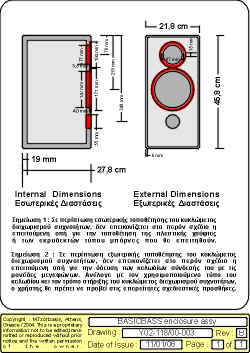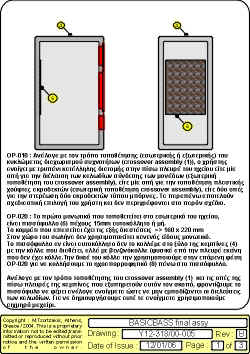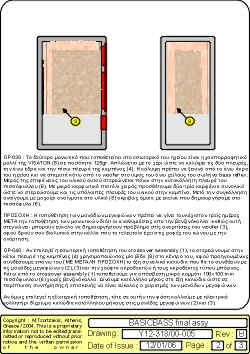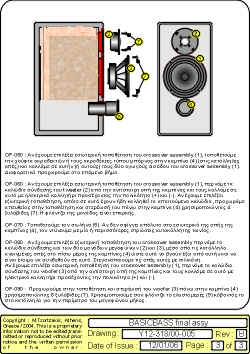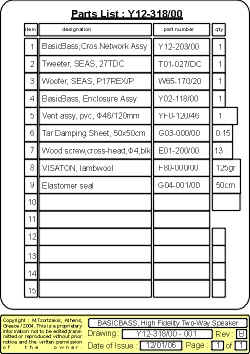The BasicBass
speaker-kit project..
(new retail price :
383 euros a pair, VAT incl. effective from March 1st 2006)
darkgrey or
cherrywood vinyl finish
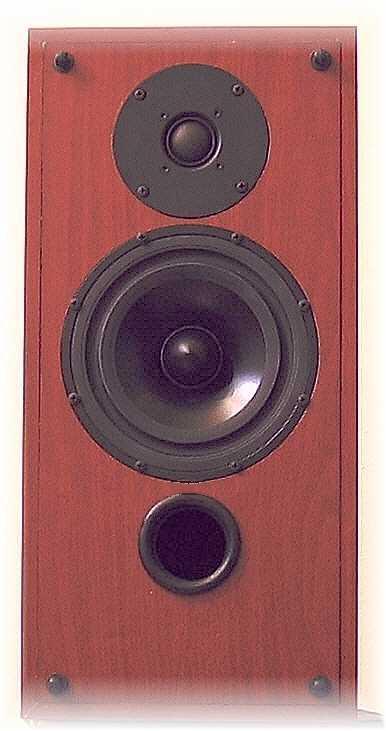
Introduction
In the beginning all we wanted to
do was a bass engine : a small sized speaker for small rooms (about 9-15 m2), capable of
delivering plenty of clear undistorted bass at a very, very low price !
We had to find a strong motor at
the 6.5'' woofer class and we came up with P17REX/P by SEAS. Its 39mm voice coil proved
more than just capable of handling large amounts of low-frequency power. It actually gave
no indication of compression or mid-frequency coloration while reproducing very low
frequency acoustic bass 'bursts'.
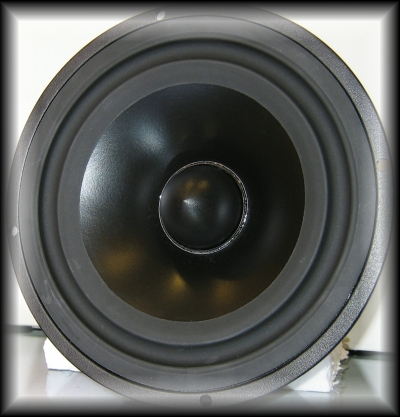
On the other hand we wouldn't want
anyone to say 'ok what about the tweeter drivers ? Are they the usual 3/4'' flat-magnet
cheap drivers everybody uses in cheap speakers ?'
For this we selected SEAS,
chambered 27mm precoated fabric dome tweeter that would definitely match the qualities of
the 6.5'' woofer. Tweeter model 27TDC will make anyone forget this kit's price and
wonder!
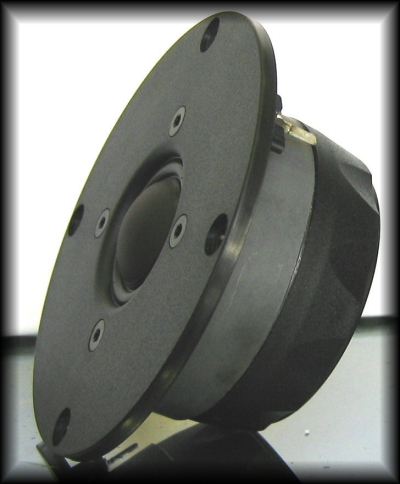
The enclosure
design..
Many speaker designers tend to
choose increased volumes even for small 6.5'' woofers in order to achieve an extended low
frequency response (i.e. a very low cutoff frequency). In this way power handling capacity
of the speaker-under-design is severely compromised.
BasicBass was given a 18lt net
volume only, thanks to P17REX/P Thiele Small parameters. The reflex-port was tuned at 44Hz
and the resulting cutoff frequency (-3dB) was placed at 40 Hz.
High-density 19mm thick MDF was
selected for the enclosure material.
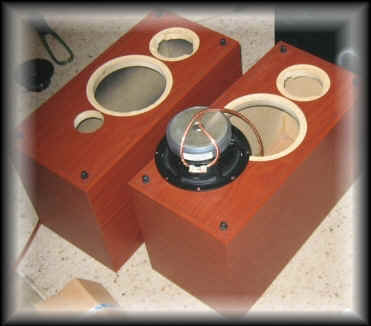
Driver and cabinet data were input
to our simulation software (LFA v5.0) to derive the optimum driver and port positions over
the baffle board. Vent emissions were kept to a minimum outside the tuning frequency as
illustrated in the following picture:
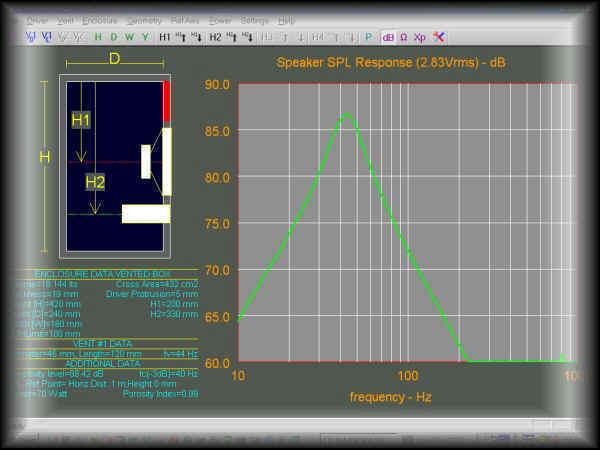
BasicBass was designed to deliver
clarity and exceptionally low distortion in the frequency range 120-900 Hz where enclosure
standing waves and vent resonances dominate.
A near field SPL measurement in
the port's mouth verified the results of our efforts (although measurement is degraded by
nearby woofer interference) :
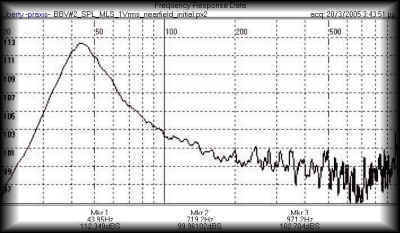
The crossover
network..
We have said it before : we
believe that crossover networks are intended to manipulate, compensate and align driver
responses. And in that sense we certainly do not promote minimalism in this area of
electronics because we definitely do not encourage the excitement of driver's
nonlinearities and cone break-up waves that many DIY designers induce through their
oversimplified crossover network topologies.
The idea has always been simple as
that : Intermodulation distortion artifacts never appear in SPL measurements. Crossover
networks are not merely 'frequency dividing' circuits. It takes more than a desired SPL
curve to really design a speaker system.
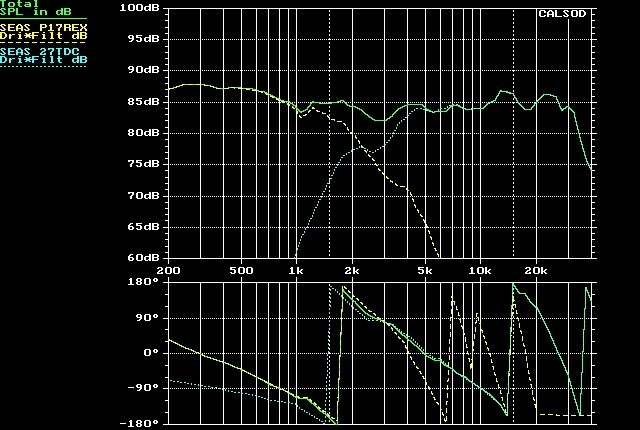
The picture above depicts the
(simulated in CALSOD) anechoic SPL response of a BasicBass speaker on tweeter axis, at a
distance of 1m, for 2.83Vrms input.
Sensitivity was estimated at 86dB
SPL and the upper cutoff (-3dB) frequency at approx. 32kHz !
The small 'valley' in the
mid-frequency range compensates for early reflections in typical living room environment.
A circuit schematic follows right
below:
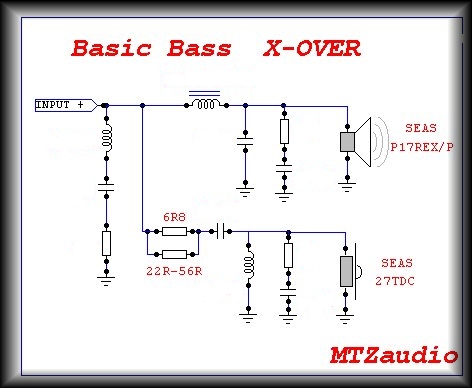
A variable value of resistance in
series with the tweeter driver (selected freely in the range of 22 to 56 Ohms) will give
everyone the opportunity to adjust mid-to-high frequency reverberation field in typical
small sized rooms. The whole circuit has been carefully optimized so that this will be a
trouble-free feature.
Low pass filter's inductor
embodies a mild-strength (inductance multiplication factor 1.2 approx.) hollow core for
saturation-free operation and decreased resistance : only 0.3 Ohms for more than 2mH !
A few words on
impedance..
MTZ Audio staff has got an
extensive experience on amplifier design hence regards the nature of a speaker's complex
impedance very critical for amplifier feedback operation. We all know that amplifier specs
are measured across laboratory resistive loads of 4 or 8 Ohms. IEC 268 standard was never
revised despite the strong criticism by many researchers and designers involved in the
amplification case.
A special impedance correction
circuit was engaged in parallel to BasicBass' crossover network, to render the latter's
impedance as resistive as possible in a wide frequency range. This sub-circuit is shown
within the crossover network schematic just above. Its 'healing' properties can easily be
understood in the following impedance graph:
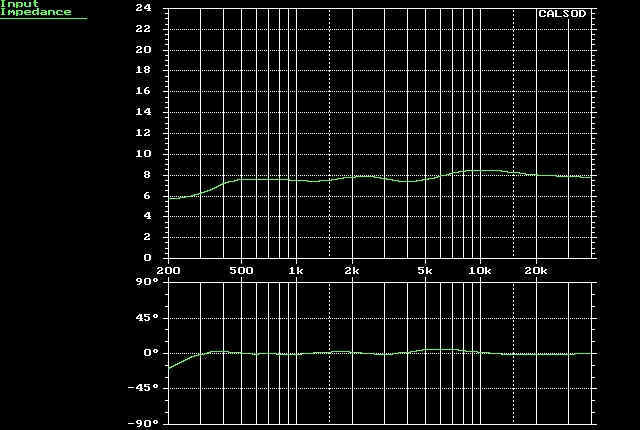
In a very wide frequency range
(400Hz to 40kHz) a nearly flat impedance for the BasicBass speaker was achieved.
At lower frequencies where large
impedance resonant peaks occur to absolutely all loudspeaker systems (up to 40 or more
Ohms !) such correction circuits demand extremely large inductance and capacitance values
and therefore are not feasible. BasicBass' impedance correction circuit is surely a
decisive step towards sonic perfection, especially for those who do not own highly
expensive amplifiers.
The assembly
procedure..
Sometimes small details make the
difference.
 One piece of tar-sheet glued behind the woofer driver..
One piece of tar-sheet glued behind the woofer driver..
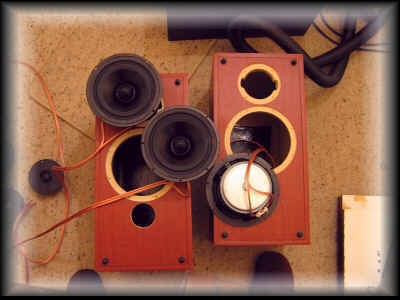
 Lamb wool by Visaton for the difficult task of internal absorption (120gr per cabinet)..
Lamb wool by Visaton for the difficult task of internal absorption (120gr per cabinet)..
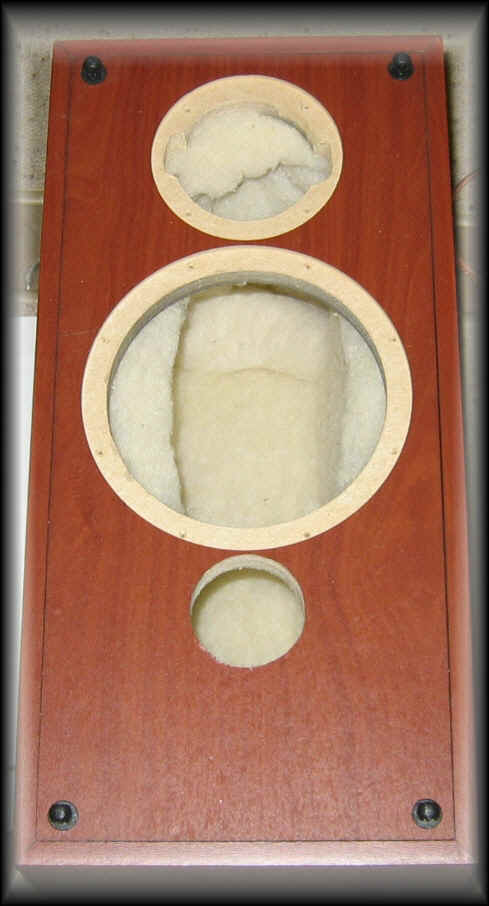
 Robust welding joints on the driver terminals..
Robust welding joints on the driver terminals..
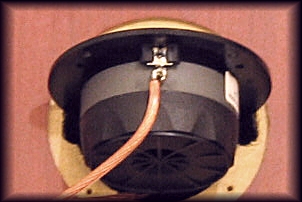
..are some of BasicBass's small
secrets.
Some useful links (in Greek) in
AVforum's discussions concerning the BasicBass project :
http://www.avforum.gr/showarticles.php?topic=11&subtopic=24675&st=0
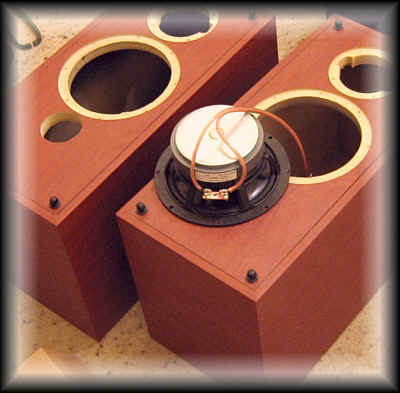
BasicBass speaker
kit
Technical
Specifications
 two-way,
two-drivers' design,
two-way,
two-drivers' design,
 elegant
19mm-MDF enclosure in cherrywood or darkgrey vinyl finish
elegant
19mm-MDF enclosure in cherrywood or darkgrey vinyl finish
 vented-box
low frequency alignment, port tuned at 44Hz,
vented-box
low frequency alignment, port tuned at 44Hz,
 high freq.
driver: 27TDC, fabric 27mm dome by SEAS,
high freq.
driver: 27TDC, fabric 27mm dome by SEAS,
 bass-mid
driver: P17REX/P, polypropylene 6.5'' cone by SEAS,
bass-mid
driver: P17REX/P, polypropylene 6.5'' cone by SEAS,
 enclosure
volume: 18lt net,
enclosure
volume: 18lt net,
 speaker
ext.dimensions in mm: 218x458x278 (WxHxD),
speaker
ext.dimensions in mm: 218x458x278 (WxHxD),
 SPL
response cutoff frequencies (-3dB): 40Hz-32kHz,
SPL
response cutoff frequencies (-3dB): 40Hz-32kHz,
 sensitivity:
86dB SPL / 1m / 2.83Vrms input (anechoic),
sensitivity:
86dB SPL / 1m / 2.83Vrms input (anechoic),
 power
handling capacity: 100W rms per amplification channel,
power
handling capacity: 100W rms per amplification channel,
 impedance:
8 Ohms,
impedance:
8 Ohms,
 crossover
frequency 2.3 kHz.
crossover
frequency 2.3 kHz.
 complete
kit inclusive of screws, absorbing materials, SEAS drivers, crossover components, dust
frame assembled with black cloth, vent tube and mouth, cabling, printed lab report..
complete
kit inclusive of screws, absorbing materials, SEAS drivers, crossover components, dust
frame assembled with black cloth, vent tube and mouth, cabling, printed lab report..
Drawings and Assembly
Instructions..
Hint : images below, link to
downloadable pdf files.
